Description
This stunning malachite bead bracelet is a mix of earthy hues and rich green tones, handcrafted with quality malachite stone beads. The bracelet features a simple and elegant design that is perfect for any occasion. Whether you wear it to accessorize your outfit or to bring a sense of calmness into your daily life, this malachite bead bracelet is a wonderful addition to any jewelry collection.
Beads are strung by hand onto strong beading wire cable, and feature an extender chain making the bracelet adjustable from 6.75-8.25″
Wear it alone or stack it with other bracelets to create a unique and personal look. With its versatile style and powerful properties, our malachite bracelet is the perfect addition to any jewelry collection.
According to Fire Mountain Gems:
Malachite (Mal-ah-kite) History
The luxuriant, swirling patterns of malachite have striking light and dark green marbling that is unmistakable. The startling beauty of this stone has come to represent sensuality and beauty.
Malachite, pronounced (Mal-ah-kite), probably derives its name from either Greek malhe, meaning grass for its green color or Greek malakos, meaning soft because the stone lends itself well to being carved. With its concentric, eye-like rings of green that mimic the eye of a peacock feather, this stone has captured the imagination of many cultures for ages, and has been described by poets as spring grass swaying in the wind.
The first culture to use malachite for adornment was ancient Egypt around 4,000 BC. The Egyptians used malachite as an ornamental stone in jewelry and art. The stone was imported from King Solomon’s infamous copper mines on the Red Sea. Archeologists have found Egyptian tomb paintings using malachite gemstones that had been ground into paint that colored the walls. It was also ground into a fine dust and mixed with galena, a thick paste used to make kohl, on slate palettes to be painted onto eyelids as a cosmetic and talisman against evil. Vivid green malachite kohl is believed to be Cleopatra’s favorite cosmetic, and she was buried with a large vase of it for use in her afterlife.
Malachite also played an important role in European paintings during the Renaissance period of the 15th and 16th centuries as a pigment for paints and dyes. It is believed that many of the green colors found in Michelangelo’s Sistine Chapel painting were painted with malachite-based oil paints.
One of the most common uses of malachite from the medieval through the Victorian times was to hang small pieces of malachite dangled from baby cribs and children’s beds to help keep evil at bay, and to help children have peaceful sleep.
It was the Russian Romanov dynasty, however, that really made malachite synonymous with outlandish luxury. High quality malachite, discovered in 1635 in the foothills of the Urals, had become very fashionable for jewelry by 1820 and was frequently paired with gold and diamonds. In 1835, a malachite boulder of the highest quality was discovered that would take 21 years to unearth and bring to the surface.
Slabs from this 260-ton gem were used to adorn the interior of two Russian palaces; creating malachite pillars, columns and encased walls. This same boulder also supplied enough malachite to encase eight of the ten huge Corinthian columns that support a two-hundred foot tall gilded altar in St. Isaac’s Cathedral in St. Petersburg, Russia.
Malachite Metaphysical Properties
Malachite is the essence of joy and is known as the “stone of transformation” because it helps reveal and heal emotional pain by absorbing the pain into itself. It is especially helpful in bringing ease during times of change and gives the insight needed for personal growth.
Just looking at malachite’s swirls, rings and intricate marbling is rejuvenating and uplifting. It can help a person get through tough transitional periods. This is a wonderful, empowering stone to wear when starting a new project or job or moving to a new home.
Malachite has been traditionally used to ward off danger and fight illness. It has been said to protect against falling and has been wrapped over bruises and broken bones to help with tissue regeneration and healing. Malachite tends to draw negative energy and disharmony into itself. Periodically recharge your malachite’s energy by placing it on a clear quartz cluster, then rinse with cool, clean water.
Overall, malachite is said to bring harmony into one’s life. Wearing it can assist in the manifestation of the heart’s desire and strengthen intuition.
Malachite Geological Properties
Malachite is a striking green marble-like stone that is mainly a hydrous copper carbonate compound. It is the copper content of malachite that gives it the green color. This green, which shares many properties with turquoise, is a form of copper tarnish similar to that found on the copper Statue of Liberty.
The more water that is in the copper, the lighter it will be and the smaller an amount of water will make the green darker. The absence of water completely will produce a black striping. When polished, it has a silky luster, but resins are usually used to enhance this shine as well as protect the surface of the stone.
Proper Care of Malachite
Malachite is especially fragile, easily scratched and can become dull. So protect it from scratches, sharp blows or large temperature changes that will fracture, shatter or chip it. The surface of malachite is usually fortified with artificial resin. Do not clean malachite in a home ultrasonic cleaner because the protective resin surface can be damaged or removed.
Malachite is sensitive to heat, acids, ammonia, and hot waters. Rinsing malachite in clean water is safe. Let it air dry and store away from other metals or gemstones that might damage the surface. Remove malachite jewelry when doing heavy work that might scratch it such as gardening or mechanics.
**Please note that all metaphysical or healing properties listed are collected from various sources. This information is offered as a service and not meant to treat medical conditions. My Sister’s Hands does not guarantee the validity of any of these statements.


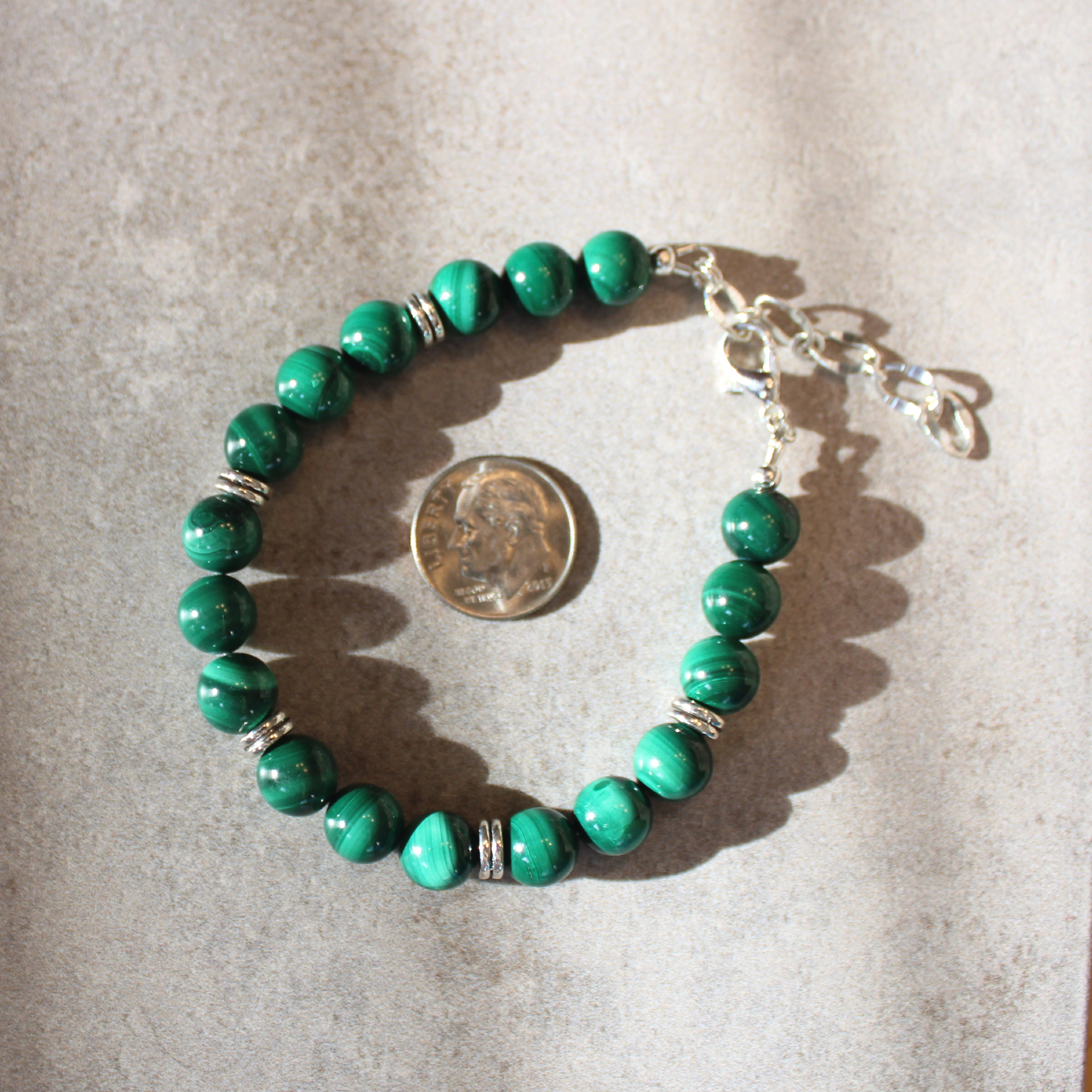
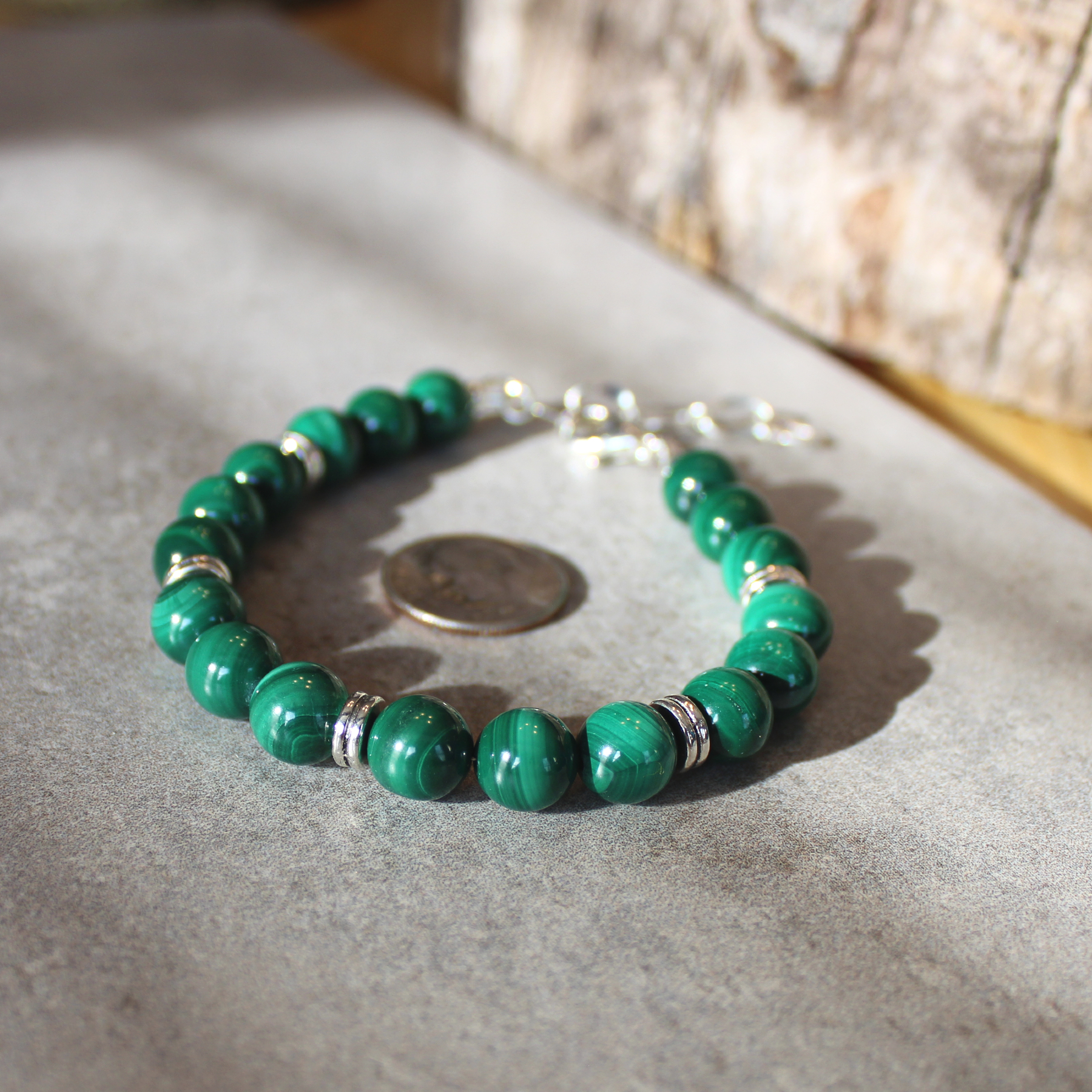
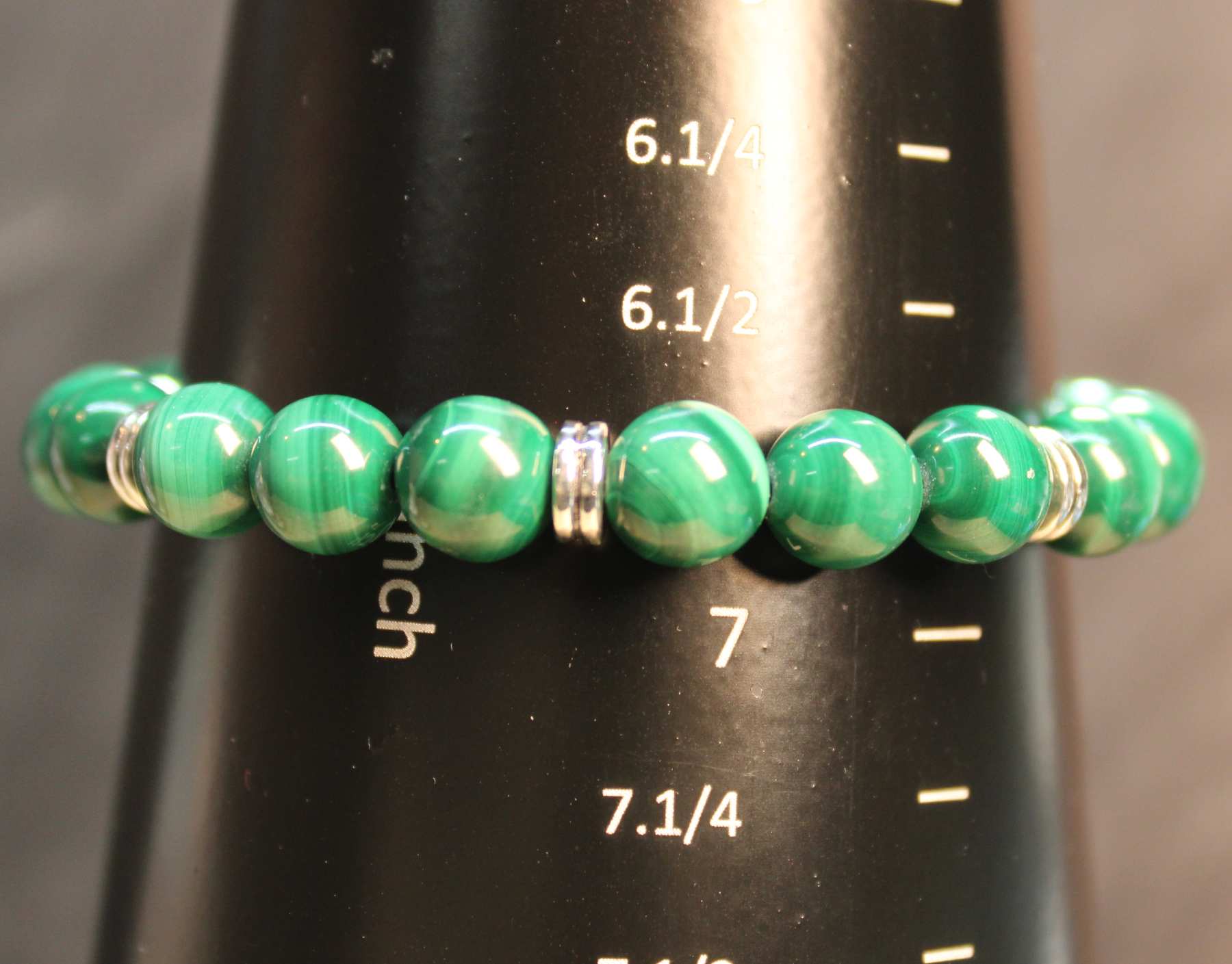
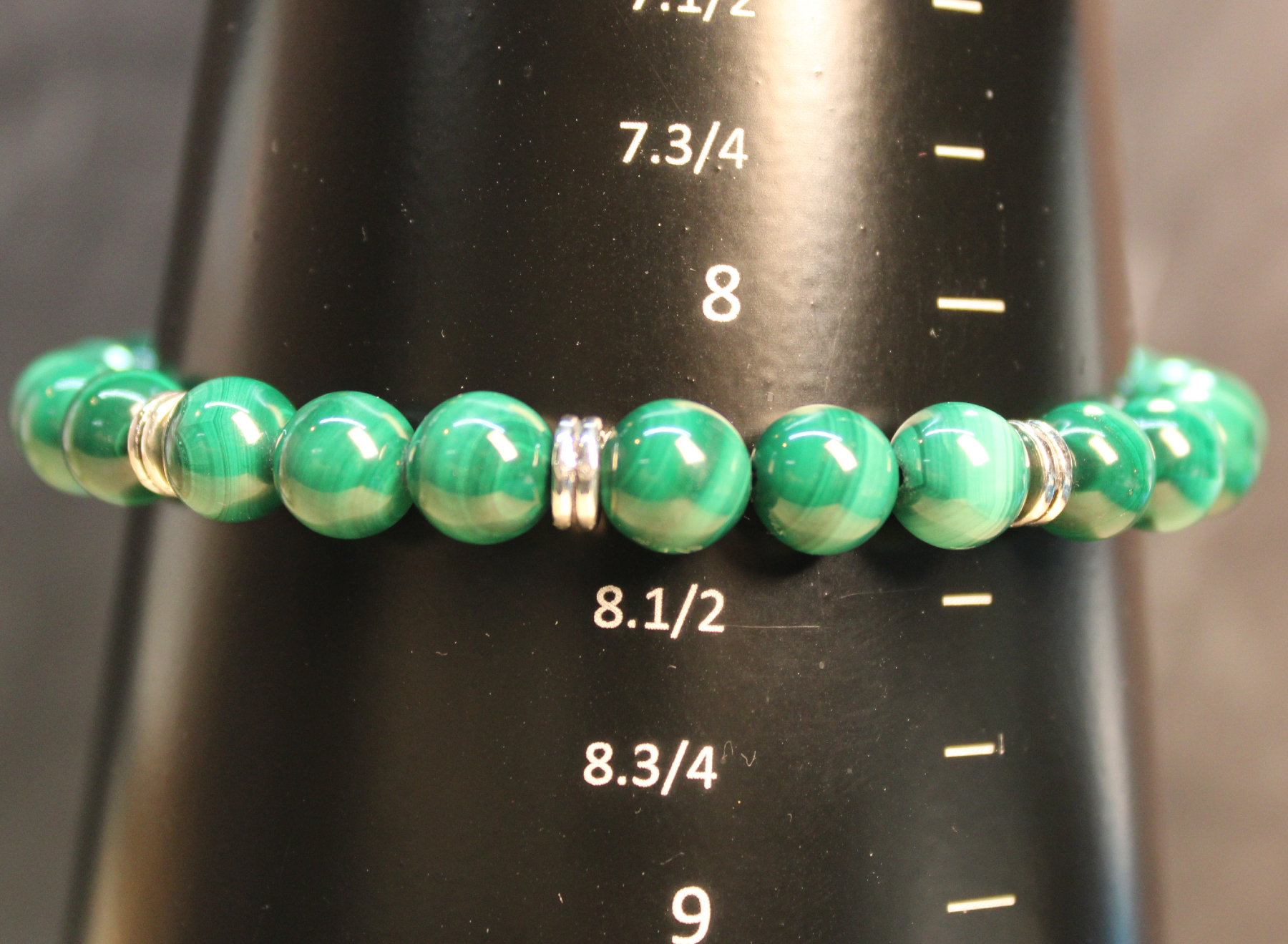
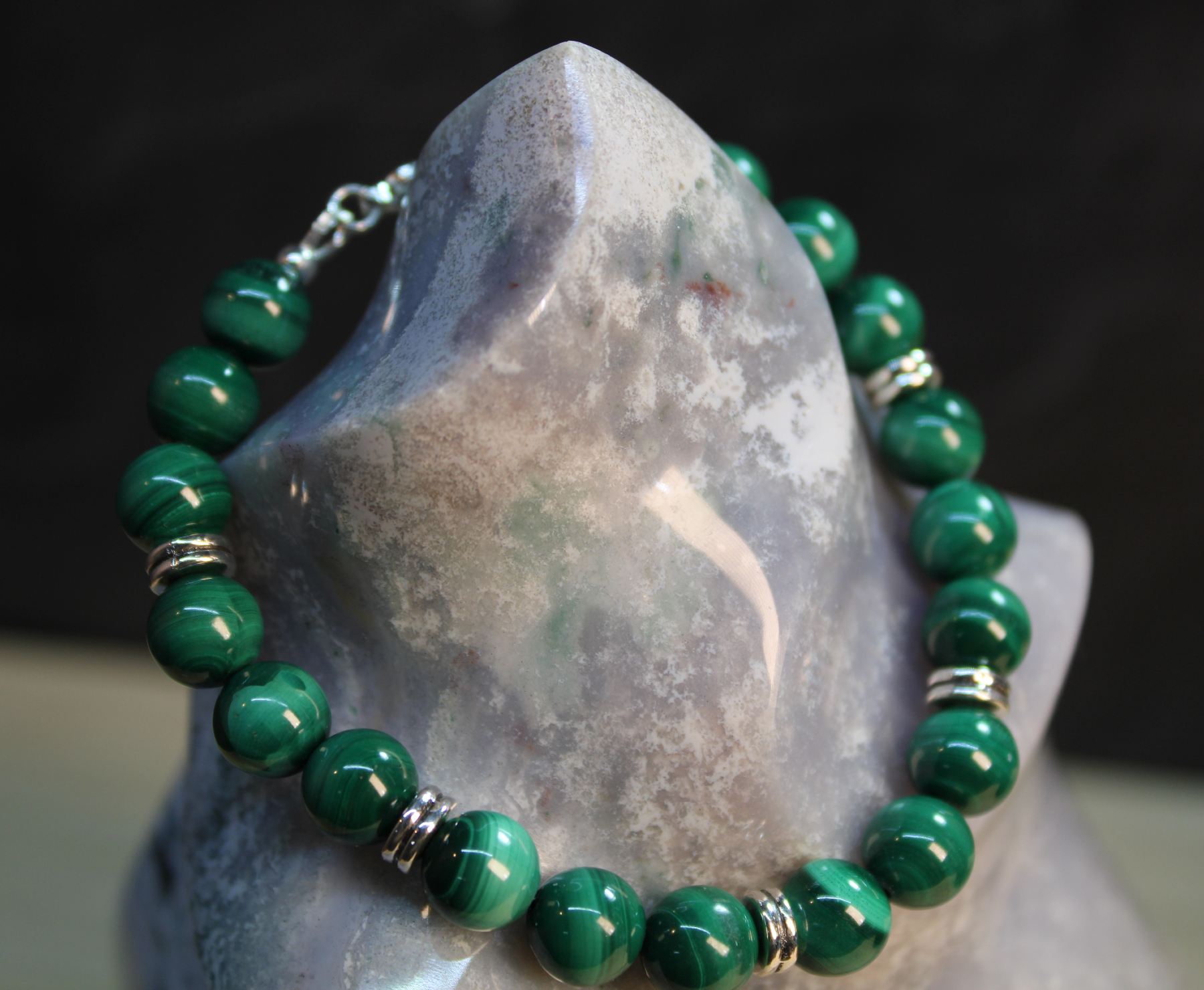


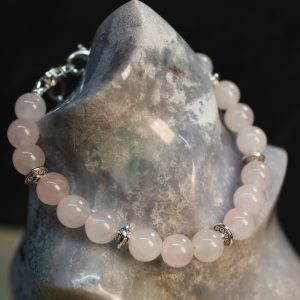

Reviews
There are no reviews yet.